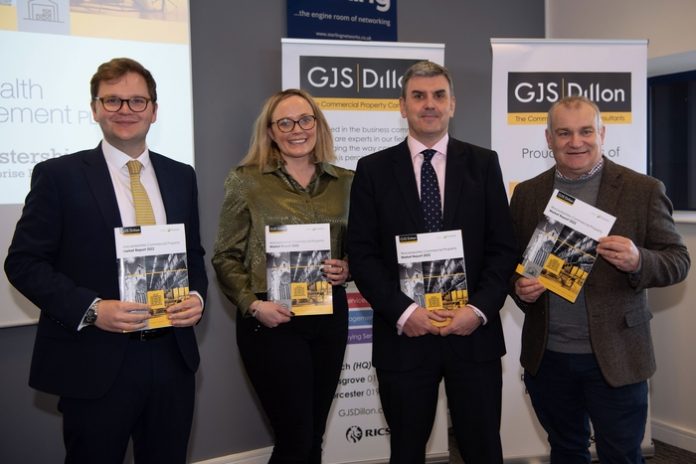
Confidence has returned to all business sectors in Worcestershire following the pandemic and office take-up is back to 2018 levels. These are amongst the key findings of a new report published today by Worcestershire commercial property consultancy GJS Dillon. But many prospective purchasers or tenants may be surprised by the lack of availability of business accommodation across the county.
‘We are seeing the highest yearly industrial take-up by sq ft ever and there are very few freehold opportunities which has led to high capital growth’ says Andrew Lewis, GJS Dillon’s Commercial Agency Director, who has authored GJS Dillon’s Worcestershire Commercial Property Market Report 2022. The report looks in detail at the county’s six office and industrial sub-markets.
Despite last year’s Covid restrictions, take up of office space in 2021 was 4% up on 2020 levels with transactions totalling 161,853 sq ft compared with 155,201 sq ft. Demand for industrial property rose by an astonishing 53% in just one year from 1,131,519 sq ft in 2020 to 1,739,834 in 2021.
‘There are a number of reasons for the shortage in commercial property’ says Mr Lewis ‘These include the rise in inflation, the effect on interest rates, the rise in construction costs and the lack of commercial land.’
The Worcestershire commercial property market has always been resilient because of its central location so even some of the newer schemes are starting to become fully occupied. So it is Mr Lewis’ view that developers need to look at bringing forward existing schemes and converting former manufacturing space to quality commercial accommodation.
‘The lack of space is limiting the growth of the SME market in Worcestershire’ concludes Mr Lewis ‘Given the buoyancy of the market, it is becoming increasingly advantageous for businesses to use an experienced local Chartered Surveyor to seek out the best opportunities both on and off-market’
The analysis in the report is based on information supplied by Worcestershire Local Economic Partnership. Since it was first published in 2019, the report has evolved into an essential document for local developers, property companies, investors , the Worcestershire LEP and the local authorities in the County of Worcestershire.




















